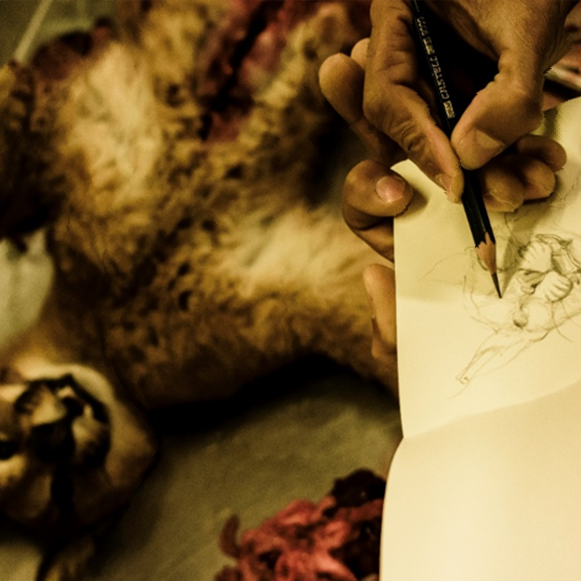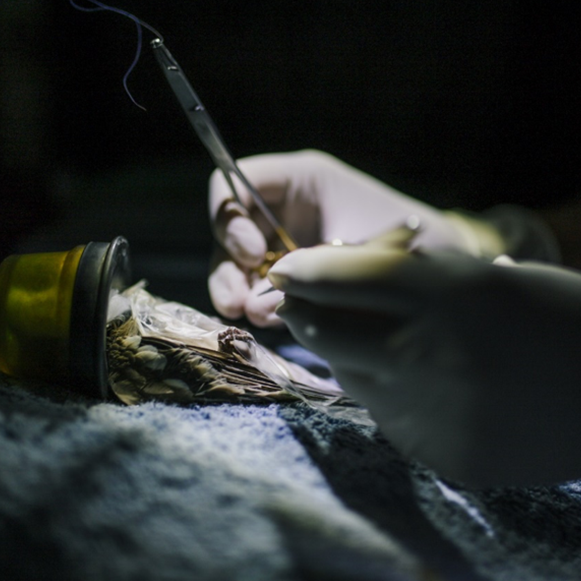The South African Science Lens® competition celebrates the wonder of science through photography, and shows how science and art can be seamless allies in communicating about the world around us. The South African Agency for Science and Technology Advancement (SAASTA), a business unit of the National Research Foundation, and its partner in the 11th round of the SA Science Lens® competition, the Human Sciences Research Council (HSRC), are pleased to announce the winners of the latest round of the competition.




Mr Kervin Prayag, with his photo entitled “Meowy Muse”, further brought science and art together to
take first place in the Science as Art category. An autopsy of a deceased caracal at the University of
Cape Town was the muse for an artist, Sujay Sanan, putting together an exhibition called “A Place I
Know”. The paintings at his exhibit diarised the landscapes, flora, and fauna of the Western Cape, in
a unique way. In the artist’s own words, “while these works document what I fear might be lost, they
are also filled with optimism”, and give a positive account of the current state of wildlife conservation.
Prof. Bruce Cairncross, from the
University of Johannesburg, saw
theatrical flare in his winning Science
Close-Up photo entitled “Happy
Faces”. The smiling face that looks
like a theatrical mask is actually
a picture of different inorganic
geological minerals. The white
and purple crusts that look like a
mask are tiny crystals of fluorite, a
calcium fluoride species. The brown
background is the mineral goethite,
an iron-hydroxide, which is typically
dark-brown. This sample of minerals
comes from a fluorite mine in the
Gauteng.
Science in Action focuses on
capturing science as it happens. The
winning photo was Thilo Beck’s “Small
scale surgery”, giving us a glimpse
into the great efforts of science to help
us understand ecosystems. Here a
tiny white-browed sparrow weaver
(Plocepasser mahali) in the Kalahari
is undergoing surgery to implant
a miniature data logger. To make the
procedure easier and less stressful
for the birds, scientists catch them
in their roosting chambers at night,
and anaesthetise them, make a tiny
incision, place the data logger in the
bird and stich them closed all within a
few minutes. It has only been possible
in the last few years to build small
enough data loggers to fit them into
small birds without constraining them
and inhibiting their flight. This study
will give valuable information to help
to understand a small piece of the
Kalahari ecosystem.
The winning entry of the Dignity of All
South Africans, the special category
for the 2020 competition, showed us
that practical science doesn’t need
to be high tech. Morgan Trimble won
with her photo called “Newlands
Spring’s Community Spirit”.
Emphasising how important water
is to human dignity, she showed us
how, in the face of Cape Town’s water
crisis that threatened dignified access
to clean water, a community member
created a solution that allowed more
users to collect water from Newlands
Spring in an efficient manner. The
simple pipe system made out of
PVC pipe, string, wire, and corks
transformed one awkward, muddy
access point to 26 points under which
to fill water collection jugs. People
from different communities came
together to cooperate in a shared
communal space.
In celebration of its 50-year
anniversary, the HSRC also selected
a special social science photo award,
choosing Dhurti Dheda’s “Connecting
Worlds”. The photo shows a street in the
inner-city suburb of Doornfontein in Johannesburg, decorated by giant metallic “flowers” or satellite
dishes. This is an impoverished area of immigrants and students, and the multitude of satellite
dishes shows the extent of how many people are occupying small apartment spaces. As satellite
television generally includes programmes from around the globe, it allows many immigrants to receive
entertainment from their home countries, connecting them to their people in a foreign country.
This year was the first time SAASTA and the HSRC teamed up to present the photographic
competition, celebrating all natural and social sciences in the 20-year anniversary of the NRF and
the 50-year anniversary of the HSRC. Through the SA Science Lens® competition, SAASTA and
the HSRC aim to encourage researchers and scientists to invite the public into their world through
inspiring curiosity in beautiful, dramatic or interesting photographs of their research. The competition
also aims to encourage the public to appreciate and find science in their everyday lives, showing how
they can view the world around them from a scientific perspective.
The full results of the competition can be found at www.saasta.ac.za/competitions/sa-science-lens
Original photos are also available for publication on request.
